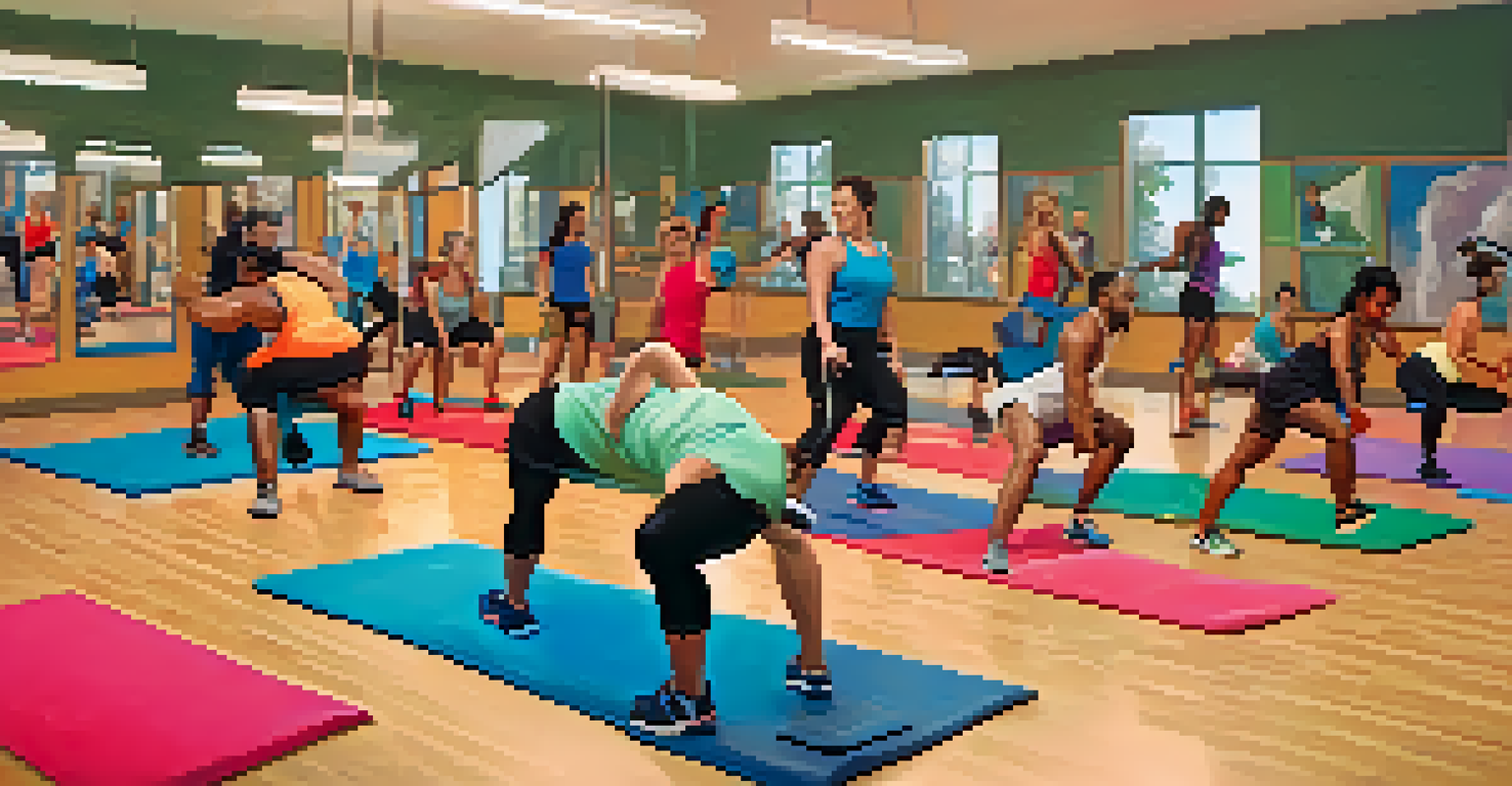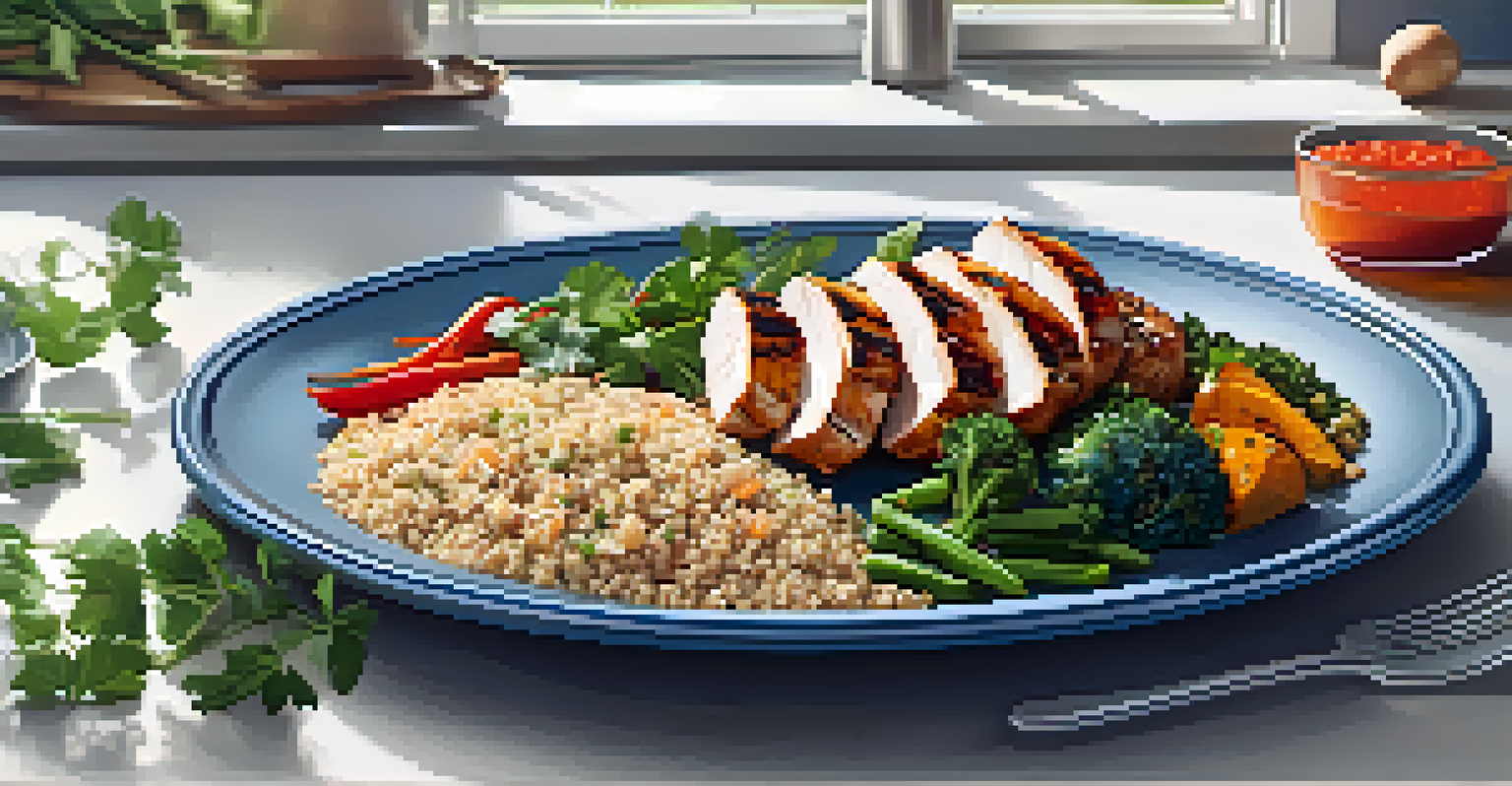How Reps and Sets Differ: Strength vs Aesthetic Focus

What Are Reps and Sets in Weight Training?
Reps, or repetitions, refer to the number of times you perform an exercise. For example, if you do 10 bicep curls, that's 10 reps. Sets, on the other hand, are the groups of reps you complete; so if you do 10 curls, rest, and then do another 10, you’ve performed 2 sets of 10 reps.
Strength does not come from physical capacity. It comes from an indomitable will.
Understanding these terms is crucial as they influence how you train. Different combinations of reps and sets will target various muscle fibers and energy systems, affecting your strength and aesthetic outcomes. So, knowing how to manipulate these variables can help you meet your fitness goals more effectively.
In essence, reps and sets are the building blocks of any workout routine. They determine the intensity and volume of your training, setting the stage for how your body responds to exercise over time.
Strength Training: Focus on Heavy Weights and Low Reps
When it comes to strength training, the general rule is to lift heavier weights with fewer reps. Typically, this means doing about 1 to 6 reps per set, with a focus on maximizing the weight you can lift. For example, a powerlifter might perform 5 sets of 5 reps at a near-max weight to build strength efficiently.

This approach emphasizes neuromuscular adaptations, meaning your nervous system becomes better at recruiting muscle fibers. This is crucial for increasing overall strength, enabling you to lift heavier weights over time. Think of it like building a solid foundation for a house; the stronger the base, the more weight it can support.
Understanding Reps and Sets
Reps and sets are fundamental concepts in weight training that influence how you train and achieve your fitness goals.
While strength is the primary goal, this method also leads to increased muscle mass. However, the primary focus remains on how much you can lift, rather than how you look. So, if your goal is to get stronger, prioritizing low reps and heavy weights is the way to go.
Aesthetic Training: Higher Reps for Muscle Definition
On the flip side, aesthetic training typically involves higher reps with moderate weights. This means performing around 8 to 15 reps per set, which helps develop muscle endurance and tone. For instance, someone looking to achieve a sculpted physique might do 4 sets of 12 reps for exercises like bench presses or squats.
The only bad workout is the one that didn’t happen.
This approach promotes hypertrophy, which is the increase in muscle size. Higher reps create more metabolic stress and muscle damage, key factors that contribute to muscle growth. It's akin to sculpting a statue; the more you chip away, the more defined the shape becomes.
While strength gains can still occur, the primary focus here is on how muscles look rather than how much weight can be lifted. This makes higher-rep training ideal for those aiming for a leaner, more defined appearance while still improving overall fitness.
Combining Strength and Aesthetic Goals: A Balanced Approach
Many fitness enthusiasts find themselves wanting both strength and aesthetics. The good news? You don’t have to choose one over the other. By incorporating both low and high rep ranges into your training, you can achieve a well-rounded physique that is strong and defined.
For example, you might focus on strength training three days a week, using low reps for foundational lifts, and then switch to higher reps for accessory exercises. This combination not only keeps your workouts fresh and engaging but also helps prevent plateaus in your progress.
Combine Strength and Aesthetics
Incorporating both low and high rep ranges allows for a balanced approach to develop strength and muscle definition.
This balanced approach can also enhance your overall performance. Stronger muscles contribute to better endurance, while the endurance builds muscle resilience, creating a synergy between strength and aesthetics that can elevate your fitness journey.
Importance of Recovery in Strength vs Aesthetic Training
Recovery plays a pivotal role in both strength and aesthetic training. Lifting heavy weights can cause significant muscle strain, necessitating adequate recovery periods to allow muscles to repair and grow. This is why rest days and sleep are crucial components of any training program.
On the other hand, while higher reps might seem less taxing, they can also lead to muscle fatigue and soreness. Therefore, even those focusing on aesthetics need to prioritize recovery to maintain progress and avoid injury. Think of recovery as the secret ingredient that helps your workout 'recipe' come together.
Incorporating active recovery, hydration, and nutrition can enhance your recovery process, ensuring you’re ready for your next workout. Remember, it's not just about how hard you train but also how well you recover that determines your success.
Nutrition: Fueling Strength and Aesthetic Goals
Nutrition is a key player in achieving both strength and aesthetic goals. For strength training, a diet rich in protein and healthy fats can support muscle repair and growth. Consuming enough calories is essential, especially if you’re lifting heavy weights, as it provides the energy needed for those intense sessions.
For those focusing on aesthetics, the approach may differ slightly. While protein remains essential, the emphasis might shift towards balancing macronutrients to optimize muscle definition and fat loss. This could involve reducing calorie intake while ensuring sufficient protein to maintain muscle mass.
Prioritize Recovery and Nutrition
Effective recovery and proper nutrition are essential for maximizing performance and achieving desired fitness outcomes.
Regardless of your focus, understanding how to fuel your body properly can significantly impact your results. Nutrition is like the fuel for your workouts; without the right kind, you won’t perform at your best, whether you're lifting heavy or aiming for that toned look.
Finding What Works Best for You: Personalization is Key
Ultimately, the best approach to reps and sets boils down to personal preference and fitness goals. Some people thrive on the challenge of lifting heavy weights, while others enjoy the burn of higher reps. Understanding your goals and listening to your body will help you find the right balance.
Experimenting with different rep and set schemes can be beneficial. You might discover that a combination of low and high reps works best for your body, providing strength gains while also enhancing muscle definition. It’s all about finding what feels right for you.

Remember, your fitness journey is uniquely yours. Embrace the process, keep an open mind, and don’t hesitate to adjust your training as you learn more about what works best for your goals.